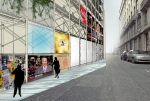Filed under: Uncategorized
Seconds after our presentation to the school of a+d, Jonathon and Ron sprinted to catch a flight to Vegas for their IDSA transition meeting/bender. I (Brad) took in a big ACC game, VT hosting # 12 Clemson. Great atmosphere, dedicated fans, and a disappointing loss. The Hokies blew a 14 pt first half lead despite looking like the superior team for most of the game. Watch out for VT at tourney time.
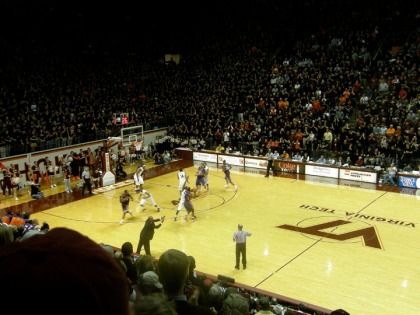
Filed under: Uncategorized
On this off day, Jonathon and Brad gave a presentation to the School of Architecture + Design about “Design Thinking”. We believe we can make life better through design and illustrated how we achieve that.
The teams are transitioning between research and concept design. As they do that many are using words to describe the experience they are trying to create based on results from the research.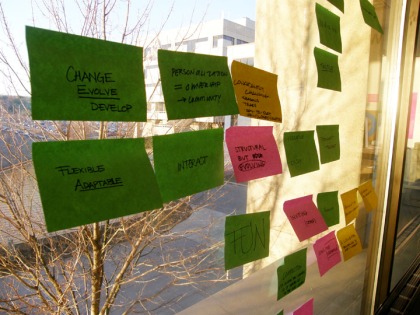
Filed under: Uncategorized
Day 3 and the signage is growing. There are three now! Will there be one for each day that wraps the wall? Will we meet the artist? We’re intrigued.
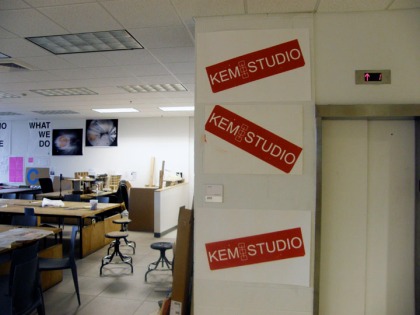
Filed under: Uncategorized
We are moving fast! The 4 teams are comprised of one member from each discipline represented, architecture, industrial design, landscape architecture, interior design and graphic design. The project, design a MOBILE GATHERING SPACE (see Project Brief under Project Info on the left sidebar) associated with an urban, social place/business. Some have focused their study area and others struggled to reign it in. After a group discussion to reinforce the challenge at hand, the teams quickly pulled together their research. At this stage we are looking for the research to lead us to a big idea, not for us to lead the research.
We briefly discussed the lessons learned from the Medici Effect – “When you step into an intersection of fields, disciplines, or cultures, you can combine existing concepts into a large number of extraordinary new ideas.” Good read, check out the excerpt on the sidebar.
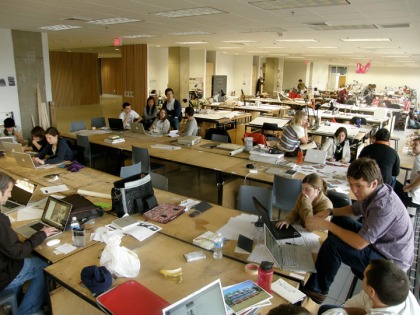
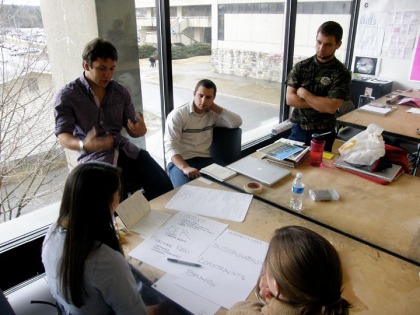
Filed under: Uncategorized
On Day 1 we arrived at VT and were pleasantly surprised to see a red screen print sign of our logo, adhered to a white CMU wall identifying the studio space. There was something mysterious about it… we didn’t know it would be there, it just showed up. It sort of has a graffiti quality to it with a little bit of the paint smeared on to the wall. The type face is off a bit and red is not one of our brand colors, but it works… it feels like us. Thanks!

Filed under: Uncategorized
Day 1 Jonathon talked about the process by which we bring clarity to the design problem. This is a framework that will result in your BIG IDEA. Use this as a guide during the research phase.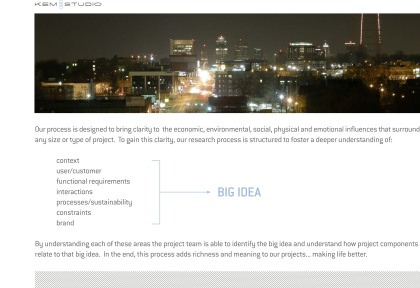
Filed under: Uncategorized
We hit the ground running on the first day! A 2 hour QUICK FIRE design charatte gave everyone the chance to get in the right frame of mind and stretch their design muscles.
The challenge – redesign the ordinary. Construction scaffolding is quickly making for a homogenized look in dense, urban cities… especially cities like NYC that feel like a constant construction site. As both a spatial condition and a surface condition, scaffolding has the potential to raise many issues in design today (the full brief is under project info).
This group accepted the framework as an efficient solution and developed a surface application concept of an “urban quilt”. It’s designed to be a multi-sensory experience within a grid of controlled chaos.
Other proposals will be posted shortly.
Filed under: Project info
One of the most productive exercises we can do to broaden how we think is to consciously look at circumstances from different perspectives. To that end, we ask that you a do couple of things as homework to establish a foundation for what we will be talking about and doing over the course of the project.
READ: Chapters 1-3 of “The Medici Effect” – This link is to a downloadable pdf excerpt from the book . Don’t worry, they are short chapters. This book is about the exact subject of this project – the power of interdisciplinary collaboration.
LOOK: Mike Sinclair is a photographer and friend who has a gift for documenting moments of daily life in ways that reveal things most of us wouldn’t notice. Review his photo sets, particularly the “personal” set. One of the things we will be discussing throughout is how design relates to experience. Understanding how design influences all of the senses allows you to remain focused on the fact that successful design is always rooted in human experience, not abstract aesthetic. Mike does a good job of capturing this.
Filed under: Project info
The purpose of this two week project is to demonstrate how interdisciplinary collaboration can liberate and invigorate design and design thinking. Over the course of these two weeks you will be challenged to examine not only what you think about while you design, but HOW you think.
It is a natural tendency to categorize people and what they do… students do it, professors do it, clients do it. You are all getting specialized degrees, after all, not general design degrees. However, we believe it is the common experiences we all share that create opportunities for collaboration and ultimately better design.
As you get ready to begin the project we ask that you consider the following goals/objectives:
Process – The best answers come from asking the right question(s). An important part of this project will be understanding, developing and evaluating research techniques that will help you methodically determine the scope, context and constraints of the design problem… before you start designing.
Participation – Collaboration is an intellectual contact sport. The way to get the most out of this short project is to embrace the differences between disciplines and try to learn as much as you can from your temporary classmates. For these two weeks you are all Designers, not specialists.
Pay Attention – Part of being a good designer is developing an intuitive understanding how people interact with the world around us. The world is not black and white. There is richness and nuance in almost every circumstance if you are paying close enough attention. Learning to see and interpret those details of daily life will help you become a more empathetic designer. (Refer to Sinclair Photography link)
Have Fun.
